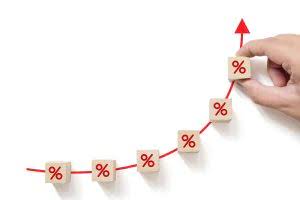
incremental cost is choice-based; hence, it only includes forward-looking costs. The cost of building a factory and set-up costs for the plant are regarded as sunk costs and are not included in the incremental cost calculation. Relevant costs are also referred to as avoidable costs or differential costs.
Certain costs will be incurred whether there is an increase in production or not, which are not computed when determining incremental cost, and they include fixed costs. However, care must be exercised as allocation of fixed costs to total cost decreases as additional units are produced. In addition to 5% NaF varnish, 38% silver diamine fluoride (SDF) solution and 1.23% acidulated phosphate fluoride (APF) gel are also fluoride agents that have proven effective in preventing root caries in elderly individuals [5]. Analyzing production volumes and the incremental costs can help companies achieve economies of scale to optimize production. Economies of scale occurs when increasing production leads to lower costs since the costs are spread out over a larger number of goods being produced. In other words, the average cost per unit declines as production increases.
How to Calculate Direct Labor Accounting
The method incorporates accounting and financial information in the decision-making process and allows for the projection of outcomes for various alternatives and outcomes. Through incremental analysis, the revenues, costs, and possible outcomes of the alternatives can be identified. Strategic consideration of incremental costs becomes especially important to avoid the traps of overproduction or underproduction, maximize resource utilization, and maintain a balanced operational strategy. This careful consideration shows how flexible and context-dependent incremental cost assessments are by acknowledging that incremental costs can differ depending on the production facility's unique circumstances and capacity limitations.
IRS Releases Long-Awaited Updates to Investment Tax Credit Regulations - Foley & Lardner LLP
IRS Releases Long-Awaited Updates to Investment Tax Credit Regulations.
Posted: Tue, 21 Nov 2023 08:00:00 GMT [source]
One-way sensitivity analysis showed that the risk ratio of root caries in the fluoride treatment group influenced the result most. In the probabilistic sensitivity analysis, fluoride treatment was cost-effective in 70.5% of the simulated cases. Manufactures look at incremental costs when deciding to produce another product. Often times new products can use the same assembly lines and raw materials as currently produced products. Unfortunately, most of the time when manufacturers take on new product lines there are additional costs to manufacture these products.
How to Determine Overhead and Labor Rate
The fixed costs don't usually change when incremental costs are added, meaning the cost of the equipment doesn't fluctuate with production volumes. Understanding incremental costs can help a company improve its efficiency and save money. Incremental costs are also useful for deciding whether to manufacture a good or purchase it elsewhere. Understanding the additional costs of increasing production of a good is helpful when determining the retail price of the product. Companies look to analyze the incremental costs of production to maximize production levels and profitability. Only the relevant incremental costs that can be directly tied to the business segment are considered when evaluating the profitability of a business segment.

The management must look at the additional cost of producing the products under one roof. This could mean more deliveries from vendors or even more training costs for employees. An incremental cost is the difference in total costs as the result of a change in some activity. Incremental costs are also referred to as the differential costs and they may be the relevant costs for certain short run decisions involving two alternatives. The significance of incremental cost lies in its influence on product pricing decisions.
How is Incremental Cost or Marginal Cost Used?
The example below briefly illustrates the concept of incremental analysis; however, the analysis process can be more complex depending on the scenario at hand. Shaun Conrad is a Certified Public Accountant and CPA exam expert with a passion for teaching. After almost a decade of experience in public accounting, he created MyAccountingCourse.com to help people learn accounting & finance, pass the CPA exam, and start their career.
Learn about the definition and calculation of incremental costs in finance, along with examples, to better understand their significance in financial analysis. For example, if a company already knows how much it costs to produce a standard quantity, say 100 units. It becomes necessary to figure out the incremental cost when considering adding an extra 10 units. As a result, the total incremental cost to produce the additional 2,000 units is $30,000 or ($330,000 - $300,000). In this case, each additional unit costs $50 ($500 divided by 100 units), making it easier for ABC Manufacturing to evaluate the profitability of the promotional campaign.
Preparing for the Unexpected: Building a Robust Insurance Strategy for Your Business
Austin has been working with Ernst & Young for over four years, starting as a senior consultant before being promoted to a manager. At EY, he focuses on strategy, process and operations improvement, and business transformation consulting services focused on health provider, payer, and public health organizations. Austin specializes in the health industry but supports clients across multiple industries.

